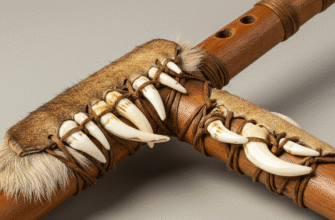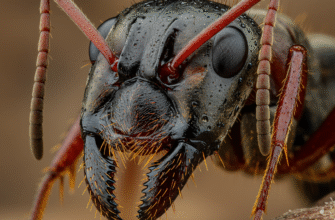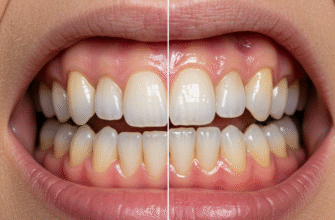There’s a curious shiver, isn’t there, when you first consider it? Teeth. In jewelry. Not the pristine, pearlescent imitations, but the real, organic remnants of life. It’s a concept that dances on the edge of discomfort for some, yet holds an undeniable, primal fascination for others. This isn’t some fleeting modern fad designed purely to shock; the practice of incorporating teeth into personal adornment is ancient, deeply symbolic, and continues to find new, artistic expression in the hands of contemporary creators. It’s a tradition that whispers tales of power, love, loss, and our intricate, often uneasy, relationship with the raw materials of existence.
Echoes from Antiquity: Teeth as Talismans and Trophies
Long before precious metals were mined and gemstones faceted, early humans looked to the natural world for materials to adorn themselves and signify their place within it. Animal teeth, formidable and enduring, were among the first objects to be imbued with powerful meaning. A necklace strung with the sharp teeth of a wolf or bear wasn’t merely decorative; it was a potent symbol of the wearer’s prowess as a hunter, a tangible connection to the animal’s strength and spirit, and often, a protective amulet warding off danger. These weren’t just accessories; they were statements of survival and respect for the natural order.
Across diverse cultures, this reverence for animal dentition manifested in myriad ways. In many island communities, particularly in the Pacific, shark teeth were highly prized. Fashioned into necklaces, weaponized edges for clubs, or intricately set into wooden carvings, they spoke of ferocity, protection from the dangers of the sea, and high social standing. Similarly, among various indigenous groups in North America, the teeth and claws of animals like bears or elks were incorporated into ceremonial regalia, each piece telling a story, representing a spiritual connection, or marking significant life achievements. The material itself, a product of a living being, carried an inherent power and narrative.
The Victorian Obsession: Sentiment and Somber Reminders
Fast forward to the 19th century, and we find teeth taking on a profoundly different, yet equally personal, significance in Western culture, particularly during the Victorian era. This was a period deeply preoccupied with sentimentality, love, and, perhaps most famously, mourning. While hair jewelry became a widespread token of remembrance, the use of teeth, especially human teeth, also carved out its niche in the landscape of sentimental adornment.
The most common and accepted form involved the milk teeth of children. Tiny, precious, and representing a fleeting stage of life, these first teeth were often saved and lovingly set into rings, brooches, or lockets by doting parents. It was a tender way to preserve a memento of a child’s growth and innocence. These pieces were not macabre; they were cherished symbols of familial love and the passage of time. The settings were often delicate, crafted from gold and sometimes embellished with pearls or enamel, designed to showcase the small tooth as a precious gem.
The use of adult teeth in mourning jewelry was less common but certainly not unheard of. In an age where death was an intimate part of life, and photography was still in its nascent stages, tangible reminders of lost loved ones were deeply valued. A tooth, an intensely personal and durable part of a person, could serve as such a relic. These pieces were more private, more somber, reflecting the deep grief of the wearer. While the Victorians had a reputation for elaborate mourning rituals, the incorporation of teeth spoke to a very personal, almost visceral, need to keep a part of the departed close.
Victorian sentimental jewelry frequently incorporated organic materials like hair and, less commonly, baby teeth. These items were not seen as morbid but as deeply personal keepsakes. Such practices highlight the era’s unique approach to memory and mourning, transforming remnants of life into cherished mementos. The craftsmanship often involved intricate goldwork and settings designed to protect and display these precious elements.
Indigenous Traditions: A Deeper Connection
While Victorian sentimentality offers one lens, many indigenous cultures across the globe have long traditions of using teeth in adornment that go far beyond simple mementos or trophies. For these communities, teeth – often from significant animals, but sometimes historically from ancestors or enemies – are imbued with profound spiritual energy, act as conduits to the spirit world, or serve as vital components of ceremonial attire, signifying lineage, wisdom, or specific societal roles. The meaning is woven into the very fabric of their cosmology and belief systems.
Consider, for example, the intricate necklaces and headdresses of some Amazonian tribes, where jaguar teeth might signify shamanistic power and a deep connection to one of the rainforest’s most revered predators. Or the elk teeth dresses of Plains Native American women, where rows of carefully polished elk ivories (actually canine teeth) adorned garments, representing wealth, status, and dedication, as gathering enough perfectly matched teeth was a significant endeavor. These weren’t just objects; they were, and in many cases still are, living pieces of cultural heritage, passed down through generations, each tooth carrying stories and sacred importance. The emphasis is less on individual loss or achievement, and more on collective identity and spiritual understanding.
The Modern Edge: Teeth in Contemporary Art Jewelry
The fascination with teeth in jewelry hasn’t waned; if anything, it has found fertile new ground in the world of contemporary art jewelry. Today’s artists who choose to work with this unconventional material are often driven by a desire to explore complex themes, challenge conventional notions of beauty, and forge a connection with something primal and deeply personal. The shock value might be an initial draw for some observers, but for the artists, it’s usually about much more profound explorations.
Ethical Sourcing and Evolving Materials
A significant consideration for modern artists is the ethical sourcing of teeth. There’s a strong movement away from materials derived from poaching or unethical hunting. Many jewelers work with animal teeth that are found naturally shed, sourced from animals that have died of natural causes, or are byproducts of licensed, regulated culling for conservation purposes or from sustainable farming. Some artists even work with their own or donated human milk teeth, continuing the sentimental tradition in a new context. When actual teeth are not viable or ethically obtainable, highly realistic replicas cast in resin or metal are also employed, allowing for the aesthetic and symbolic power without the ethical quandaries. These are then often combined with traditional jewelry materials like silver, gold, bronze, and even gemstones, creating a striking juxtaposition between the raw and the refined.
Symbolism and Statement in the Now
Modern tooth jewelry often carries potent symbolism. It can be a powerful memento mori, a reminder of the wearer’s own mortality and the transient nature of life, prompting introspection rather than fear. For others, it’s about reclaiming a connection to the wild, to our animalistic instincts, or challenging the sanitized, often artificial standards of mainstream beauty. By transforming a tooth – something potentially seen as medical waste or even grotesque – into an object of beauty and contemplation, artists question our perceptions and discomforts. These pieces can tell deeply personal narratives, represent rites of passage, or serve as talismans of personal strength and resilience. You’ll find such creations not just in art galleries, but also embraced within various subcultures like goth and punk, where they resonate with themes of rebellion, individuality, and an appreciation for the darker, more organic aspects of existence.
Beyond the Shock: Appreciating the Artistry
It’s easy to have a visceral first reaction to the idea of teeth as adornment. For some, it immediately conjures images of the macabre or the unsettling. But to dismiss it outright is to miss a rich tapestry of human history, cultural significance, and compelling artistic expression. When you look beyond that initial jolt, you can begin to appreciate the incredible craftsmanship, the thoughtful conceptual underpinnings, and the sheer audacity of artists who choose to work with such a fundamental, yet often overlooked, part of living beings.
The enduring fascination with incorporating organic elements into what we wear speaks to a deep-seated human need to connect with the natural world, with our own bodies, and with the cycles of life and death. Teeth, in this context, are not just relics; they are storytellers. They carry the imprint of life lived, whether that of an animal revered for its power or a child cherished for their innocence. In the hands of a skilled artist, a simple tooth can be transformed into a profound statement, a piece of wearable art that is both deeply personal and universally resonant. It challenges us to confront our own perceptions of beauty, value, and the materials we choose to carry with us.
So, the next time you encounter jewelry featuring teeth, perhaps pause a moment. Look beyond the immediate and consider the layers of history, culture, and artistic intent that might be embedded within. It’s a practice as old as humanity and as fresh as the latest contemporary design, a testament to our unending quest to make meaning and beauty from the very essence of life itself. This unique form of adornment reminds us that even the most unexpected materials can hold profound stories and aesthetic power.







